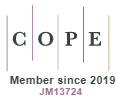BER Performance in Digital Video Broadcasting-Terrestrial for Inner and outer Interleaving Using 64 QAM
DOI:
https://doi.org/10.15415/jotitt.2013.12009Keywords:
Digital Video Broadcasting DVB-T/H, FEC Channel coding, Interleaving, BERAbstract
Digital video broadcasting-terrestrial (DVB-T) was developed by the DVB Project that was first broadcast in the UK in 1997. The compressed digital audio, video and other data in Moving Picture Expert Group (MPEG) transport stream, using orthogonal frequency-division multiplexing (OFDM) modulation is transmitted by this system. In order to analyze how an MPEG transport stream at the input of a DVB-T modulator is turned into a DVB-T signal, the channel coding and modulation technique must be considered. DVB-T offers three different modulation schemes (QPSK, 16QAM, 64QAM). This paper analyzes the performance of the system for the stationary reception. The aim was to implement all the functional blocks as specified in the DVB-T specification and analyze the BER performance of the system. Thus, this paper deals with a MATLAB application being developed to simulate DVB-T system for selected QAM. This work deals with the MATLAB code to establish a system level simulation environment and use this system simulation model to evaluate the system performance hence provide the result in evaluating the performance of DVB-T with 64QAM. This system is able to measure and analyze the performance of bit error rate (BER) versus energy per bit to noise power spectral density ratio (Eb/No) for 64 QAM.
Downloads
References
[2] ISO/IEC 13818 (Part 1to3): Information technology -Generic coding of moving pictures and associated audio information.ISO/IEC.[Online]Available:h http://neuron2.net/library/mpeg2
[3] ETSI EN 300 421 V1.1.2 (1997-08). Digital Video Broadcasting (DVB); Framing structure,channel coding and modulation for 11/12g Hz satellite services. ETSI, 08/1997. [Online]Available:http:// pda.etsi.org/pda/queryform.asp
[4] ETSI EN 300 429 V1.2.1 (1998-04). Digital Video Broadcasting (DVB); Framing structure, channel coding and modulation for cable systems. ETSI, 04/1998. [Online] Available: http://pda.etsi. org/pda/queryform.asp
[5] Y. Yasuda, K.Kashiki, Y.hirata (1984). ‘High-Rate Punctured Convolutional Codes for Soft decision Viterbi Decoding’, IEEE Trans. On Communications, vol. CO m -32,no. 3,pp:315-317, march1984
[6] Md. Dulal Haque et al., (2008). “Performance evaluation of a wireless Orthogonal Frequency Division multiplexing system under various concatenated FEC channel-coding schemes” Proc. IEEE(ICCET 2008) pp.25-27Dec 2008.
[7] Stukavec, R. et al., (2009). “Matlab simulation of the DVB-T transmission” Proc.IEEE Radioelektronika, 2009. RADIOELEKTRONIKA ‘09. 19th International Conference pp. 315 - 318 April 2009.
[8] Huttl, O. Kratochvil, T. (2010). “Comparison of native and In-depth Symbol interleaving used in DVB-T/H channel coding” Proc.IEEE pp1-4, April 2010
Downloads
Published
How to Cite
Issue
Section
License
Articles in Journal on Today's Ideas - Tomorrow's Technologies (J. Today’s Ideas - Tomorrow’s Technol.) by Chitkara University Publications are Open Access articles that are published with licensed under a Creative Commons Attribution- CC-BY 4.0 International License. Based on a work at https://jotitt.chitkara.edu.in. This license permits one to use, remix, tweak and reproduction in any medium, even commercially provided one give credit for the original creation.
View Legal Code of the above mentioned license, https://creativecommons.org/licenses/by/4.0/legalcode
View Licence Deed here https://creativecommons.org/licenses/by/4.0/
 |
Journal on Today's Ideas - Tomorrow's Technologies by Chitkara University Publications is licensed under a Creative Commons Attribution 4.0 International License. Based on a work at https://jotitt.chitkara.edu.in |











